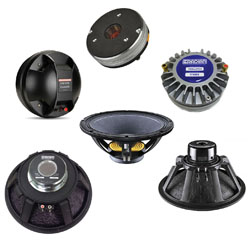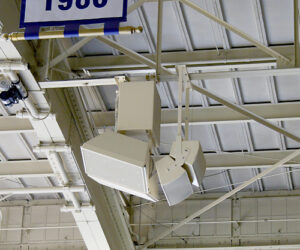The Old Soundman once said to me, “A speaker ain’t a speaker unless it’s got some speakers inside.” Indeed, true words of wisdom.
Cone and compression driver technology has improved considerably over the years, mirroring the progress of the loudspeaker systems that utilize them. The result is sonic quality that’s vastly upgraded, along with enhanced durability.
Advanced design techniques and the employment of materials such as neodymium in magnet structures have helped lead this charge. Today’s drivers are marked by greater power handling, increased efficiency, and enhanced output in comparison to previous models.
There are hundreds of top-quality options available to end users, both to replace outdated drivers in their loudspeaker systems as well as for those who prefer to build their own full-range boxes and subwoofers.
When seeking either replacements for drivers no longer manufactured or making an upgrade, it’s best to match the original transducer’s operating parameters as closely as possible. Not all drivers behave the same way when given the same signal or when loaded into a particular enclosure.
Many key driver specifications are commonly known as Thiele-Small Parameters, named after A. N. Thiele and Richard Small, who showed how various parameters affect the relationship between a transducer and the enclosure. Additional important specs include sensitivity, power rating, and usable frequency range.
Sensitivity is one of the most useful specifications because it shows how loud a transducer will get relative to the input signal. This spec is stated in decibels (dB), usually referenced to 1 watt of input signal measured at 1 meter of distance from the driver. The higher the sensitivity rating, the more efficient the driver is at reproducing sound.
A parameter that seems to confuse some is wattage. Simply put, wattage is not a measurement of loudness (again, that’s the job of the sensitivity rating), it’s simply a statement of how much input power a particular device can handle. (In other words, the power rating.) A transducer with a lower power rating but a higher sensitivity rating can have a louder output than one with a higher power rating but lower sensitivity. For example, a woofer with 96 dB sensitivity and 500 watts power handling will get as loud as a 1,000-watt driver with 93 dB sensitivity.
The frequency range that the unit operates within is relatively self-explanatory. But as you’ll see in the listings in our Photo Gallery Tour, these do vary between what appear to be similar devices.
For compression drivers, two additional things to look for are throat size and mounting configuration. Drivers normally fall into these throat-size groups: 1-, 1.4- (or 1.5-) and 2-inch. Generally speaking, the larger the throat, the larger the diaphragm and the lower in frequency range the driver can operate in.
And, diaphragms can be made of many materials, with aluminum and titanium being the most popular. Magnet structures are usually neodymium, which is light in weight and performs very well, but as a rare earth element, it can be subject to market volatility. As a result, more manufacturers are also offering both cone and compression models with ferrite magnet structures, which are heavier.
In our round-up of recent transducers, we’ll take a look at compression drivers that handle higher frequencies and cone drivers optimized for lower frequencies. Common parameters include usable frequency range, power handling, weight, and sensitivity, intended as a start to your own research. Enjoy the Photo Gallery Tour.
Senior contributing editor Craig Leerman is the owner of Tech Works, a production company based in Las Vegas.
















